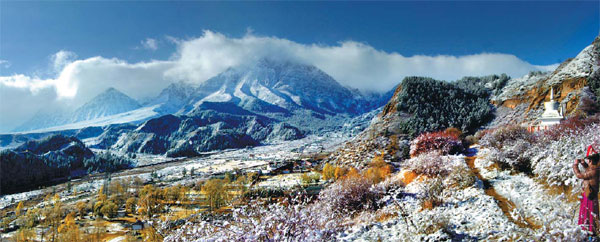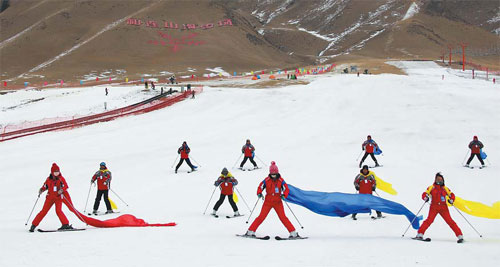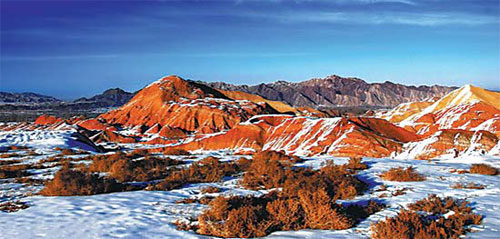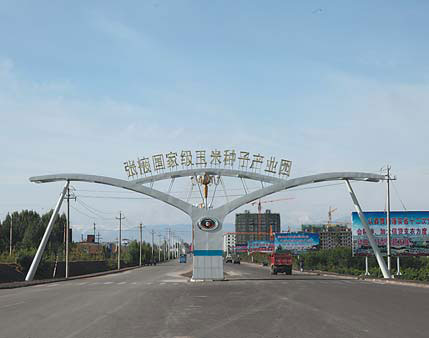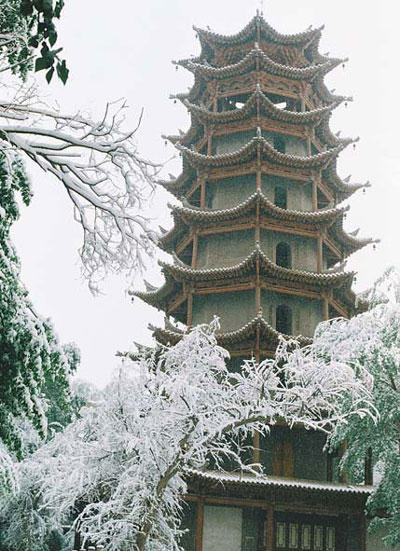News
Zhangye - from glorious past to shining future
Updated: 2015-12-18By Hao Nan ( China Daily )
Richness of culture, resources, farming and landscape make city unique, Hao Nan reports.
Z hangye in Northwest China's Gansu province is known for its glorious past, rich historical relics and beautiful natural scenery.
Located in the middle of the Hexi Corridor, the city was an important commercial hub along the ancient Silk Road and a political, economic, cultural and diplomatic center of Northwest China in ancient times.
The Hexi Corridor, also called the Gansu Corridor, was part of the ancient Silk Road. During the Western Han Dynasty (206 BC-AD 24), the corridor was an important route linking North China and the Tarim Basin and Central Asia taken by traders and the military.
Zhangye is home to about 1.3 million people of 38 nationalities in an area of 42,000 square meters.
With developed networks of expressways, high-speed trains and planes, the city is a key transportation hub in Northwest China and also a strategic channel through which to deliver electricity, natural gas, coal, vegetables and grains from China's western areas to the eastern region.
The city sits in the midst of two State-level natural reserves - Qilian Mountains and Heihe River - and has diverse landscapes including grasslands, wetlands, hills and danxia, or sandstone.
The Danxia National Geological Park, also known as Zhangye Danxia Geopark, is located in the northern foothills of the Qilian Mountains. Best known for its colorful rock formations, it has been voted by Chinese media as one of the most beautiful landforms in China, Mayor Huang Zeyuan said.
The city also has one of China's six most attractive grasslands, the Qilian Grassland.
Zhangye also boasts many religious temples such as the Giant Buddha Temple and Mati Temple, and Asia's largest horse farm in Shandan county.
The Zhangye Giant Buddha Temple was built in 1098, during the Western Xia Dynasty (1038-1227).
It has 46 clay sculptures and a collection of more than 10,000 cultural relics such as ancient calligraphies and paintings, ancient coins, bronzes and jade.
A 34.5-meter-long sleeping Buddha and the first printed edition of the Tripitaka - the earliest collection of Buddhist writings - are the two most valuable treasures in the temple.
Zhangye was listed as one of China's famous historical and cultural cities in 1986.
It is home to 1,200 cultural sites and over 30,000 historical relics are preserved in local museums and temples.
The city is also a tourism destination recommended by the National Tourism Administration of China, with famous tourist spots including Zhangye National Wetland Park, Dahuwan Cultural Tourism Scenic Area, Binggou Danxia Geological Park and Pingshanhu Grand Canyon.
In 2014, Zhangye hosted more than 11 million visitors.
Zhangye has a thriving agriculture industry thanks to its numerous streams, abundant sunlight and fertile soil.
It serves as an important base for the country of corn seed and organic farm products, and is also a large provider of mushrooms, traditional Chinese medicines, potatoes and fruit.
Zhangye corn seed is the only one of its kind in China that has secured protection by geographical indications.
In the city's Linze county, the corn production area covers about 20,000 hectares, accounting for 70 percent of the total farmland area. The Zhangye National Corn Seed Industrial Park is located in the county's Dashahe River development area, and has investment of 3.8 billion yuan ($586 million).
The park aims to integrate seed processing, information releases, product exhibitions, trade and research. Currently, construction of infrastructure facilities such as water and electricity has been finished, and 10 large seed companies have been located in the park.
In addition, the park has built 10 corn seed centers, which are equipped with 36 drying and processing lines, with a combined annual production capacity of 250,000 metric tons.
Its seeds have been sold in 26 provinces, cities and autonomous regions in the country. Zhangye also has a modern agricultural pilot and demonstration zone in Ganzhou district, which was included on the list of national modern agricultural demonstration areas in 2010.
The zone now has six high-tech agricultural companies, with more than 200 researchers and management staff members.
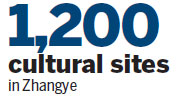
Zhangye is abundant in deposits of new energies and mineral resources.
It has 33 kinds of proven minerals, including coal, tungsten, molybdenum, iron, gypsum and potash, which play a crucial role in the local economic and social development.
The reserves of tungsten and molybdenum rank first in North China, with a potential value of over 1 trillion yuan.
In recent years, the city government has focused on the development of an ecological economy, which is considered a way to transform the local economic development model.
It also continues to improve the city's investment and business environments to promote implementation of projects.
From January to October, the government signed nearly 300 contracts, with paid-in investments of more than 39 billion yuan.
|
Spectacular natural views of Pingshanhu Grand Canyon attract visitors from home and abroad. Photos provided to China Daily |
|
Visitors enjoy a day at the Qilian Mountain Ski Area. |
|
Zhangye is famed for its colorful Danxia landform. |
|
The Zhangye National Corn Seed Industrial Park sells its seeds to 26 provinces, cities and autonomous regions in China. |
|
A traditional-style wooden tower from the Sui Dynasty (AD 581-618) is a popular destination. |

